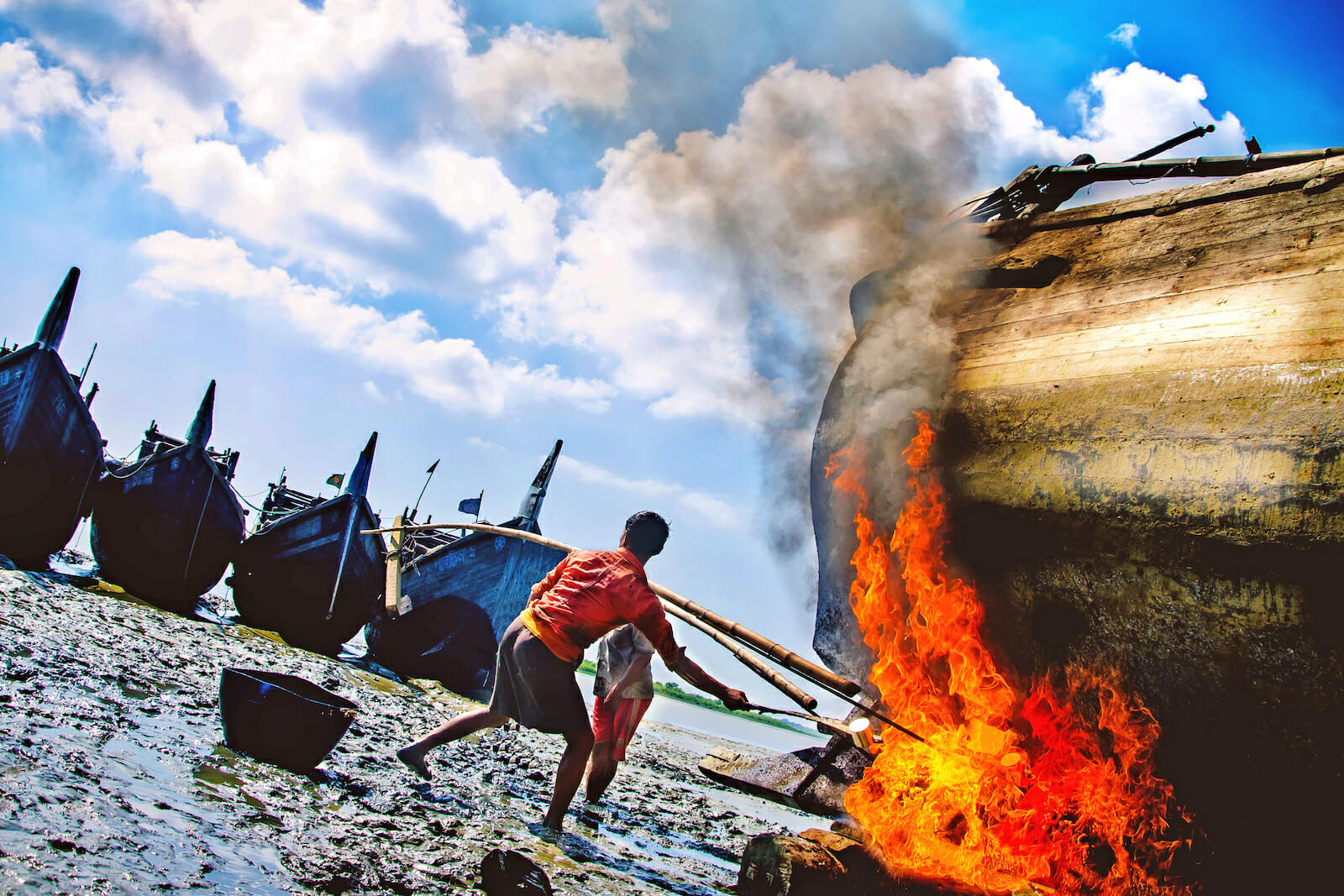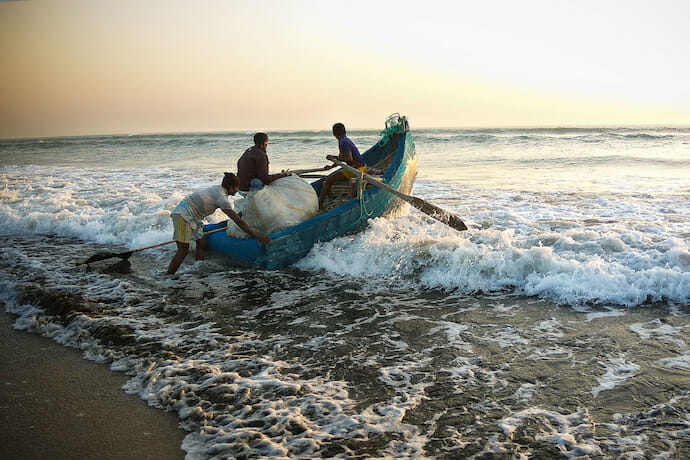
The Linkage between Climate Change and Migration
In 2014, Ioane Teitiota made headlines after he became the world’s first climate change refugee when he applied for a visa in New Zealand on the basis of rising sea levels associated with climate change in his native Kiribati. While the case was dismissed and Teitiota was deported, his case raised awareness of displacements and possible conflicts caused by environmental changes.
Following Teitiota’s case, in 2017 New Zealand’s government announced that they were considering creating a visa category to help relocate Pacific Island citizens displaced by climate change. Since then, environmental migrants have been facing an uncertain future, but this new category of visa would allow the gap in the 1951 Refugee Convention to be filled. The problem would be devising a protocol to legally determine whether climate change had made it impossible for an environmental migrant to live in their home country.
Although the United Nations High Commission on Refugees (UNHCR) estimated that there are more than 68.5 million people displaced from their homes (the largest number since the Second World War), this does not include people displaced by climate change. According to the 1951 Refugee Convention, climate change refugees do not qualify for refugee status, as they are not being persecuted by race, religion, nationality or by the membership of a political or religious group. It was on the basis of this definition that the New Zealand Tribunal ruled against Teitiota’s visa application.
In order to fill the void of the 1951 Refugee Convention, 181 of the United Nations member states signed the UN Global Compact on Refugees in December 2018, which aims to address climate-driven migration for the first time in the world history. Policymakers and politicians need to understand that migration is intertwined with climate change. One cannot solve one problem without concentrating the same effort on the other. The only way to address migration issues is by spending money and time on climate change solutions.
In recent years, environmental disasters have produced more refugees than armed conflicts. Climate change has been responsible for redrawing the world we live in. Unfortunately, the least developed and developing countries are the most exposed to the consequences of climate change due to the population’s dependence on agriculture and because of main effects such as deforestation, pollution, and degradation of natural systems and ecosystems, which often undermine their traditional and sustainable way of life. Climate change is a cause of displacement and results in large and complex population movements, generating a migratory movement unprecedented in history.
Millions of African citizens from the Sahel region sought refuge in Europe in the 2015/2016 mass migration flow. The Sahara and Sub-Saharan regions have constantly suffered from droughts and desertification due to climate change, causing widespread flight in a search for survival. On March 14 this year, the tropical cyclone, Idai, devastated and tore Southeast African nations. Such a cyclone sheds light on how fragile developing countries are when it comes to climate change issues.

Another susceptible region is Southeast Asia and Oceania. According to the International Monetary Fund (IMF), Southeast Asia is one of the regions most affected by climate change. The average temperatures in Southeast Asia have risen every decade since 1960. Bangladesh, Vietnam, Myanmar, the Philippines, and Thailand are among 10 countries in the world most affected by climate change in the past 20 years. In January this year, Australia broke records with the hottest summer ever, with the average temperature at 40 degrees Celsius (104 Fahrenheit). In addition, climate change is causing marine heatwaves to happen more frequently and with greater intensity, resulting in massive destruction of marine life.
In the equatorial regions, two countries that had vowed to honor the Paris Agreement—Brazil and Indonesia—are falling short. Both countries are among the ten largest emitters of greenhouse gases due to the heavy use of agricultural pesticides and farming, and now they are struggling to keep up to their promises.
Not far from Brazil, changes in climate have severely affected Latin America which is particularly vulnerable because it is bordered by two oceans, the Pacific and the Atlantic. Both oceans are warming and becoming more acidic, drastically impacting food and water supply in the region. Thousands of citizens of Central American countries left their homes in the pursuit of better living conditions. The Dry Corridor inhabitants have been yearning for rain while waiting in a drought that led to hunger and starvation.
Despite the efforts of civil society, climate change migration has rarely been recognized at international levels, hindering the chances of gaining asylum for those who have been driven from their homes by climate change. Examples as Teitiota’s visa application from small island nations which have been facing a very high risk of coastal inundation and loss of livelihoods due to global warming are piling up in developed countries such as New Zealand, Australia, and the United States.
Although the UN Global Compact on Refugees is an attempt by the international community to come together to build a framework to manage international migration, the international community, civil society, and the people need to make sure such framework will be correctly implemented by all signatory countries. The UN Global Compact on Refugees should put equal focus on implementing the Paris Agreement, which is lagging in transparency, compliance, and commitment.
According to the United Nations Framework Convention on Climate Change (UNFCCC) Article 8, developed countries that pollute and emit more carbon dioxide are responsible for climate changes in vulnerable countries. Therefore, developed nations should reimburse vulnerable countries for their losses and damages which include the development of approaches to address the effects of such events on the most vulnerable developing countries, which are recognized as bearing disproportionate costs from climate change, as they have contributed the least to the problem and have the least capacity to manage its negative impacts.
On one hand, the Paris Agreement has difficulty reporting how developed nations are financially assisting vulnerable countries in need of assistance in the implementation of mitigation actions on climate change. Issues such as format, content, and timing of these reports are still open, as well as the process for reviewing the reports by the convention’s technical expert group. This is a critical issue, which once solved will allow us to identify in a concrete way the countries’ performance in reducing greenhouse gas emissions within the Paris Agreement.
On the other hand, vulnerable countries lack the means to assess the loss and damages caused by climate change. The world needs a joint solution for a joint problem: climate change and migration. Developed countries need to ensure and establish financial instruments to mitigate the loss and damages of vulnerable countries by promoting concrete actions such as building resilience, coordinating and developing legal and policy framework for climate displacement and migration, and providing effective participation in the implementation of actions.
Climate change will keep increasing the number of refugees around the globe, and this issue must be addressed sooner or later. If developed countries do not make the necessary investments and compromises necessary to halt climate change, they will have to do deal with the climate refugees later. Although there has been some significant progress in furthering understanding the concept of loss and damage, defining and estimating loss and damage associated with climate change impacts remains a work in progress, which needs to be addressed. In the meantime, Mother Nature is calling everyone’s attention to remind us who is in charge. Climate change is no longer the silent driver of migration flows, it is roaring to the four corners of the world. Sooner or later, developed countries will have to deal with this linkage.

